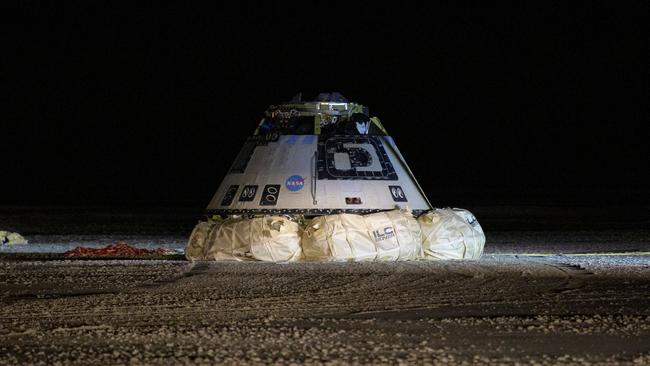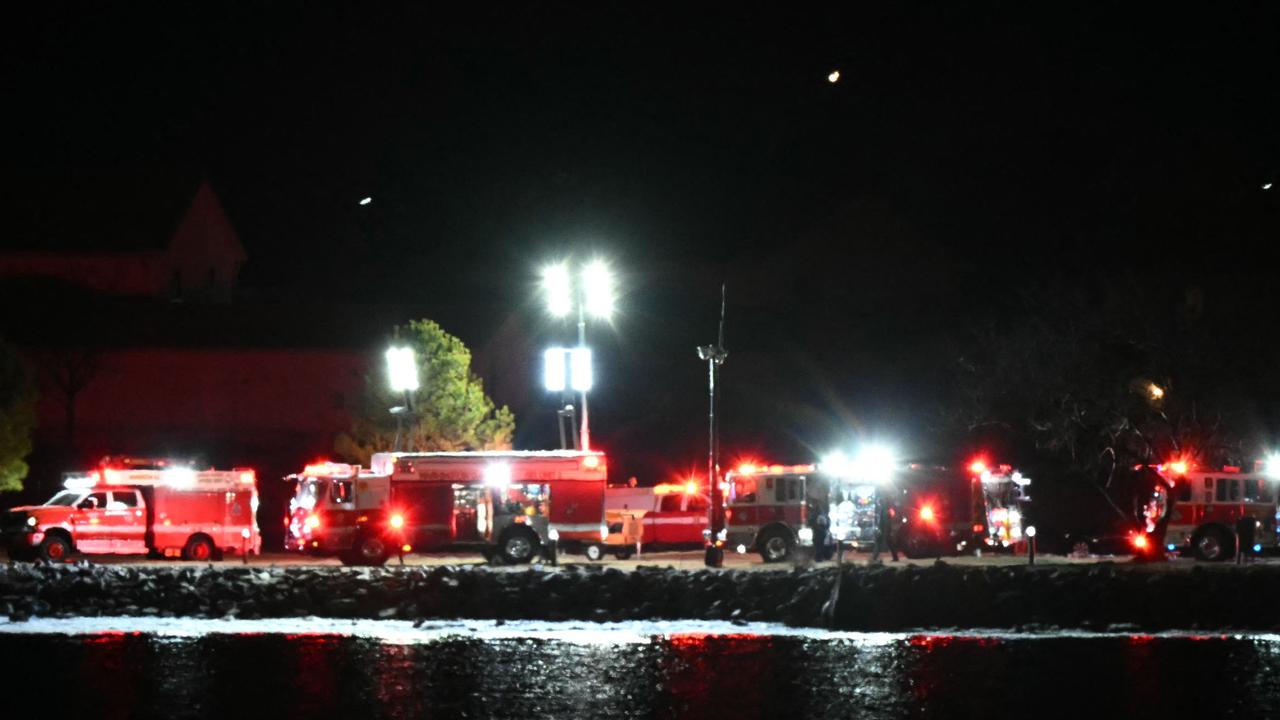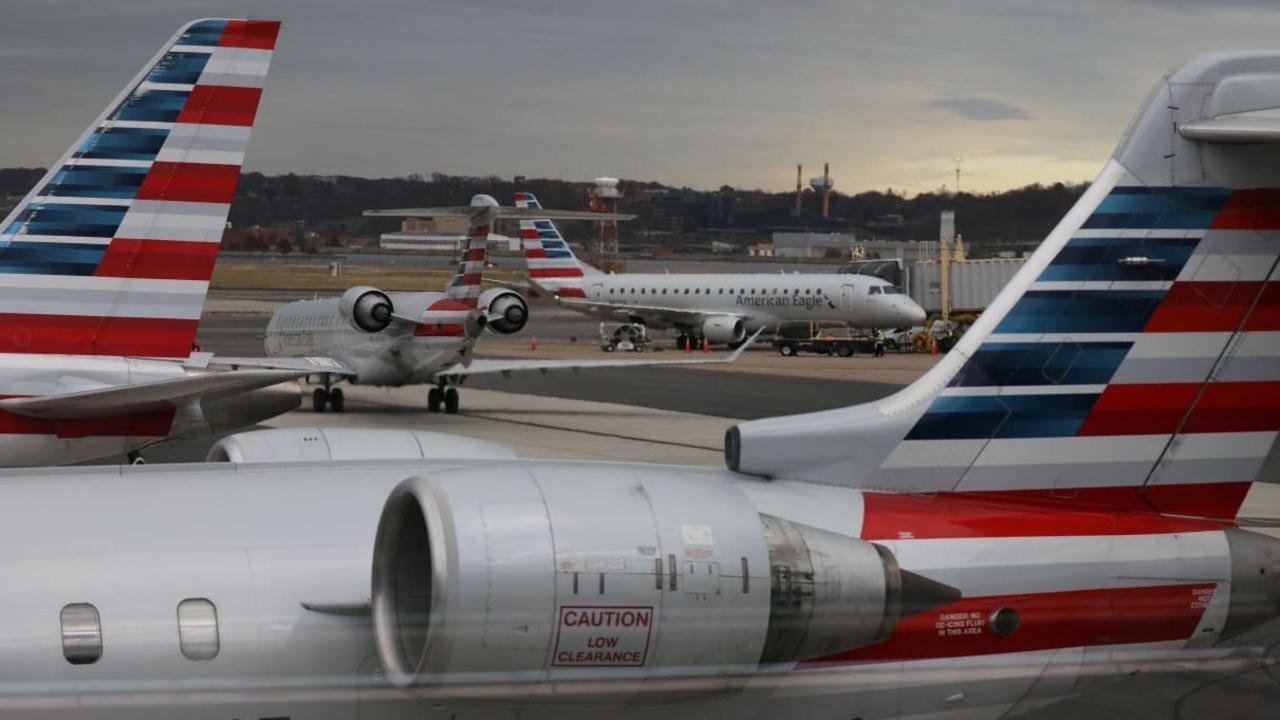Ill-fated space capsule pulls off perfect landing
The Boeing Starliner astronaut spacecraft has made a ‘bull’s-eye’ landing in the New Mexico desert.

The Boeing Starliner astronaut spacecraft has made a “bull’s-eye” landing in the New Mexico desert, a successful ending to a crewless test mission that two days earlier failed to reach the orbit needed to dock with the International Space Station.
The landing on Sunday (Monday AEDT) at the White Sands desert capped a turbulent 48 hours for Boeing’s botched milestone test of an astronaut capsule that is designed to help NASA regain its human spaceflight capabilities.
A software problem on Friday caused the capsule to fail to attain the orbit needed to rendezvous with the space station, another unwelcome engineering black eye for Boeing in a year it grounded its 737 Max jetliner following two fatal crashes.
Officials from the aerospace company and NASA breathed sighs of relief following the landing, a highly challenging feat.
“Today it couldn’t really have gone any better,” Boeing space chief executive Jim Chilton said.
He said experts would need weeks to analyse the data from this mission before determining if Boeing could move forward with plans to send a crewed mission on the craft in 2020. The landing, which tested the capsule’s re-entry and parachute deployment, will yield the mission’s most valuable test data after it failed to meet one of its core objectives of docking with the space station.
“We’re going to get I think a lot more data than we would have gotten if the test had gone according to plan,” NASA administrator Jim Bridenstine said.
After the CST-100 Starliner’s touchdown, teams of engineers in trucks raced to inspect the vehicle, whose six airbags cushioned its impact on the desert surface as planned. The spacecraft was in good condition, with little charring and stable air pressure and temperature in the cabin.
Boeing is vying with entrepreneur Elon Musk’s SpaceX to revive NASA’s human spaceflight capabilities. SpaceX carried out a successful unmanned flight of its Crew Dragon capsule to the space station in March.
After the Starliner capsule was launched from Florida on Friday, an automated timer error prevented it from attaining the right orbit to dock with the space station. Mr Chilton said the timer was running 11 hours ahead, which caused the spacecraft to burn fuel too quickly.
Reuters


